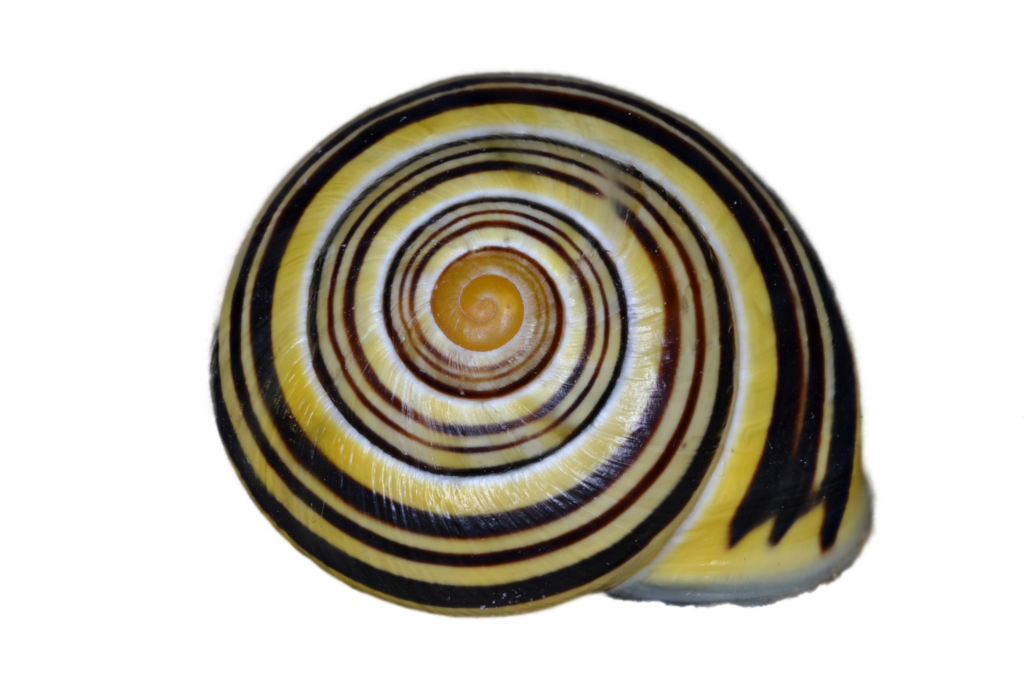


Image Usage Information
Family: Helicidae
Common name: Grovesnail
Discovery: Linnaeus, 1758
Non-native
Identification
Width: 23-25 mm
Height: 18-19 mm
Whorls: 5
The glossy shell of Cepaea nemoralis is a slightly depressed globe shape. It is frequently some shade of yellow, with one to five darker-colored spiral bands of varying widths on the shell, or it can be entirely unbanded. The lip is usually, but not always, brown. The umbilicus is covered by the lip, which has a thickened basal projection near the columella. Irregular growth ridges cover the shell (Pilsbry, 1948, Kerney and Cameron, 1979). Cepaea nemoralis may be easily confused with C. hortensis; it differs by having somewhat coarser radial ridges, a projection on the basal lip, and a dark lip.
Ecology
This species is often found in early-successional or semi-open habitats, and is very adaptable to disturbed or man-made environments. It has been found on roadsides among construction materials, in old fields, in coastal marshes and beach shrublands, along river floodplains, at abandoned industrial sites, and in suburban and even urban locations. In Maryland, Örstan et al. (2011) tracked the dispersion of an introduced colony along roadsides, ditches, hedgerows, field edges, and forest remnants, and even across a river bridge. It is a calciphile and is sometimes found upon concrete structures or debris.
Taxonomy
Cepaea nemoralis has also been known as Helix nemoralis and Tachea nemoralis.
Distribution
Cepaea nemoralis is a native of Western Europe and has been introduced into urban and suburban areas throughout the United States and southern Canada, from Nova Scotia to South Carolina and British Columbia to California. It is mostly absent from the Great Plains. Interestingly, in Virginia it is found mainly in western counties but not along the coast, suggesting a north-south dispersion pattern.
Conservation
NatureServe Global Rank: G5, Secure.
